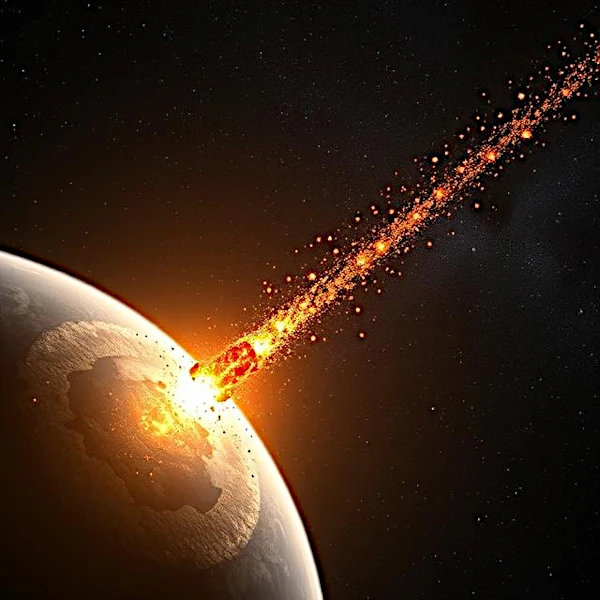
Earth is not an isolated entity from the rest of the Universe: it is the result of a long process of accretion of cosmic dust, meteorites, and comets. This primitive matter comes from the protoplanetary disk that surrounded the young Sun, itself formed from debris of ancient generations of stars. Thus, it is not a singular body, but a concentrate of universal ingredients, gathered at an ideal distance from a stable star.
This privileged positioning in the habitable zone, combined with favorable planetary chemistry, allowed the early appearance of bacterial life, at least 3.8 billion years ago. From then on, Earth could become a "vector of biological expansion," an active source of cosmic seeding.
Between -4.1 and -3.8 billion years ago, the solar system experienced an intense period of impacts known as the Late Heavy Bombardment (LHB). Asteroids and comets violently struck the terrestrial planets, fracturing their surfaces and projecting debris into space at speeds sometimes exceeding Earth's escape velocity.
Some of these terrestrial ejecta, originating from areas already colonized by primitive bacteria (in the oceans or surface rocks), could have been propelled beyond the Sun's attraction. If these fragments contained dormant microorganisms, protected within the rock, they could have traveled far into interstellar space, potentially reaching other planetary systems.
Three key conditions must be met to make reverse panspermia plausible:
This reversed process transforms Earth into a "stellar mother," a diffuser of universal biological germs.
Martian meteorites (such as ALH84001) have been found on Earth: this proves that interplanetary exchanges are possible. Nothing prevents the phenomenon from having existed in the opposite direction, and on a larger scale.
Orbital mechanics allows for the transfer of objects beyond the heliopause (150 AU), particularly through gravitational assistance or galactic perturbations. Moreover, Earth's magnetic field and atmosphere could have protected some ejecta until the initial impact, ensuring their partial sterilization without eliminating all life.
The scenario of reverse panspermia is therefore physically plausible and compatible with the gravitational dynamics of celestial bodies.
The idea of reverse panspermia—where Earth could have exported life to other worlds—is no longer purely speculative. Although controversial, this theory is based on plausible astrophysical mechanisms and recent discoveries in astrobiology.
Major meteorite impacts, such as the one that contributed to the extinction of the dinosaurs, could have ejected rock fragments containing extremophile microorganisms into space. Laboratory studies have confirmed that certain bacteria, like Deinococcus radiodurans, can survive extreme space conditions, including vacuum, radiation, and temperatures near absolute zero.
Once in space, these life-bearing rocks could travel for millions, even billions of years, before crashing onto an exoplanet with favorable conditions. If this hypothesis were verified, Earth would not only be a receptacle of life but also a key player in its dissemination on a galactic scale.
If this hypothesis were confirmed, it would revolutionize our understanding of biology and our place in the universe. Earth would no longer be an isolated blue dot but an active link in a potential network of life on a galactic scale.